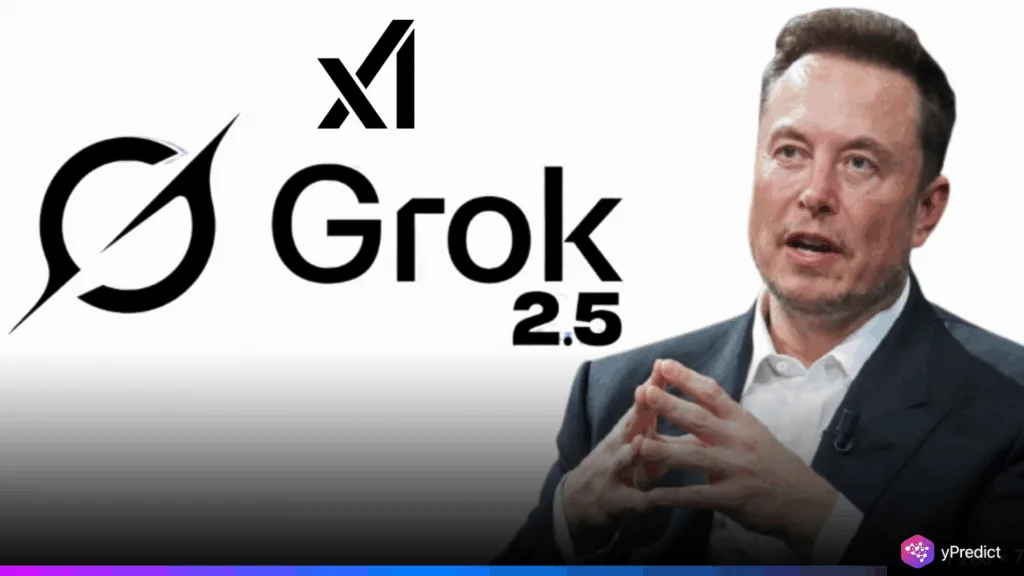
Elon Musk has taken another bold step in the rapidly intensifying artificial intelligence race. His company, xAI, has published parts of the Grok 2.5 code online, a move designed to attract developers, researchers, and startups to experiment with its tools. Musk also confirmed plans to do the same for Grok 3, signaling that his team wants to accelerate innovation through openness.
This release comes at a time when competition in AI is fiercer than ever. OpenAI continues to dominate the market with ChatGPT, while Google’s Gemini aims to combine intelligence with scalability across multiple platforms. By offering the Grok AI model as open-source, Musk is sending a clear message: xAI wants to stand as a credible rival, not just another startup trying to catch up.
The strategy is also part of a broader push to challenge the dominance of closed AI systems. Many developers argue that access to open-source AI accelerates progress by allowing transparency and experimentation. Musk’s move taps into this growing sentiment while giving xAI a chance to carve its own space in the AI landscape.
Why Musk Chose to Open-Source Grok
Musk has always touted himself as an advocate for democratizing technology. With the launch of the Grok AI model, he is living up to that claim. Developers are able to see the underlying model, learn how it works, and perhaps develop their own applications.
This kind of approach has been extremely successful in different technology sectors in the economic past, where open frameworks have been developed and improvements have occurred at an accelerated rate. For Musk, rather than holding Grok behind closed doors, he provides the AI community with a pathway for collaboration. He is creating a differentiation with OpenAI, which is pulling back access and engagement for its highest performant models, and challenging the community with debates over transparency and trust.
The intended launch of Grok 3, at the same time defines this commitment. By opening upcoming Grok models, xAI anticipates to generate a feedback and collaborated development cycle to ensure that they are developing providing models for changing community needs.
The Competitive Landscape of AI
The timing of this movement isn’t casual. AI competition is not just about smarter chatbots and leadership in a major sector that will remake the global economy. OpenAI is already upgrading ChatGPT with enterprise functionality and Google added Gemini to its entire suite of products including Search and Workspace. xAI is still very much in its infancy phase, but the launch of the Grok AI model may allow xAI to quickly gain traction. And because xAI provides developers direct access, it is banking on community-developed innovation that OpenAI and Google’s closed systems will not able to mimic.
At the same time, Musk’s approach appeals to businesses and governments who are uncomfortable operationalizing black-box AI. In an increasingly regulated global landscape, transparency and adaptability may become significant selling points.
How Developers and Businesses Can Benefit
The open-source AI code provides an opportunity for developers to harness a new wave of possibilities. They can begin to develop custom applications, optimize for niche use cases, and stress test the model in the real world. This could enable breakthroughs in various institutions, such as healthcare, education, and logistics.
Businesses gain from this model, too. Unlike deploying proprietary tools from a single vendor, they can use Grok-based solutions with freedom. With AI being adopted rapidly across the board, the freedom to customize models provides flexibility to AI adopters, which even many giants don’t have.
Furthermore, by upselling Grok 2.5 now and promising Grok 3 in the near term, xAI shows it is in this for the long haul. This signals stability to potential partners, who may be hesitant to approach a younger company in this space.
What This Means for the Future of AI
Musk’s strategy indicates the AI industry could become more fragmented in the future as open and closed models coexist alongside each other. OpenAI and Google will likely continue to protect and extend their competitive advantages through proprietary systems, while xAI is establishing itself as the open alternative.
The implications of this could be significant. If the Grok AI model gets enough developer engagement, it may lead to innovation at a speed that a single organization may not be able to keep up with on its own. Eventually, it could create a more equitable AI ecosystem, without one dominant organization controlling it all.
For Musk, it is evident: openness could lead to scale, usage and power. For the industry, it demonstrates the continuing struggle over how the field of artificial intelligence should be developed and made accessible.
Final Thoughts
Elon Musk’s decision to open-source the Grok 2.5 code is more than a technical update. It is a deliberate strategy to reshape the narrative of AI development. By giving the world access, Musk is betting that collaboration, transparency, and openness will help xAI compete against the heavyweights of the industry.
As Grok 3 follows, the world will be watching closely. Whether this gamble pays off depends on how quickly developers and businesses embrace the opportunity. One thing is certain: the AI race just became even more competitive.






